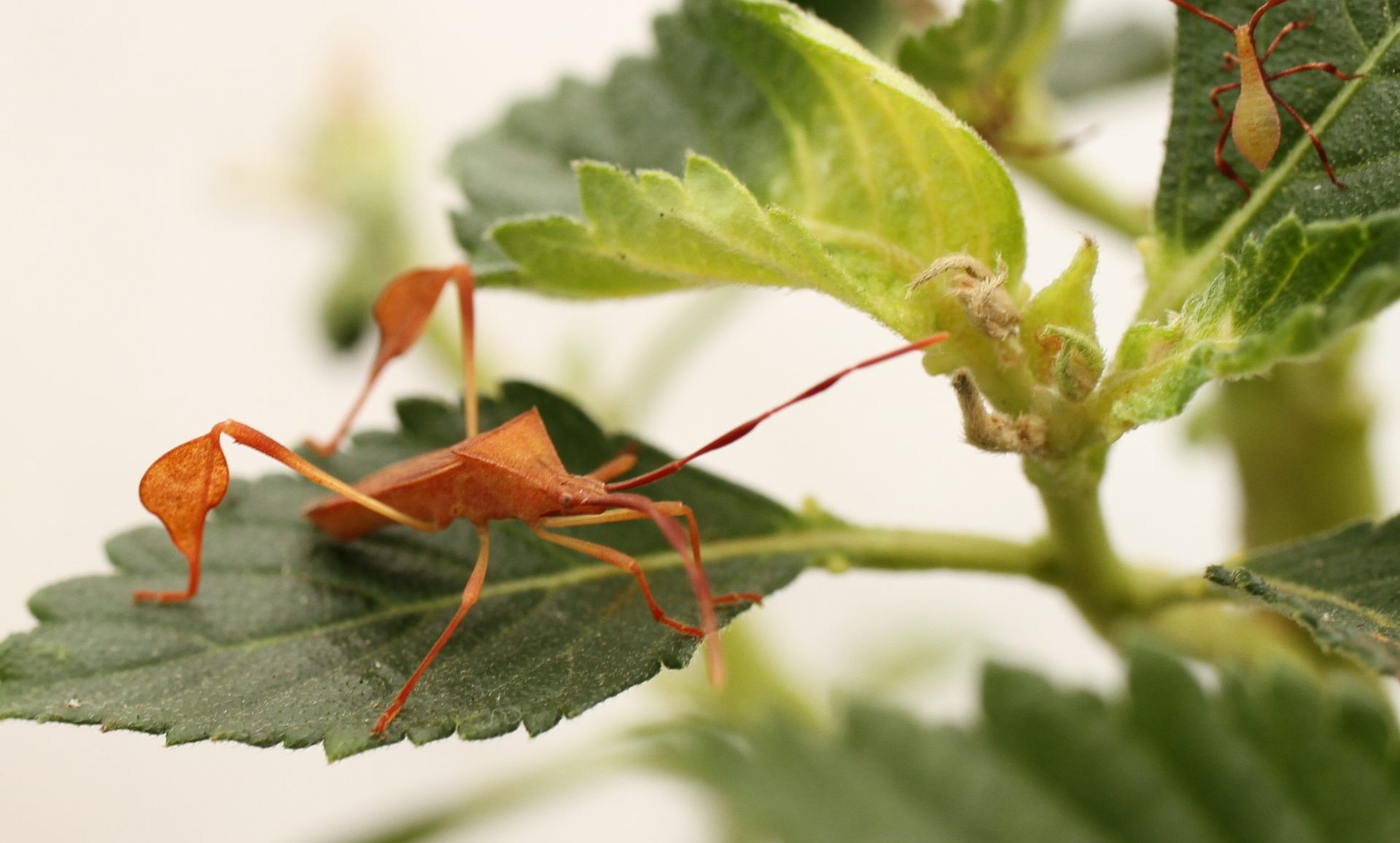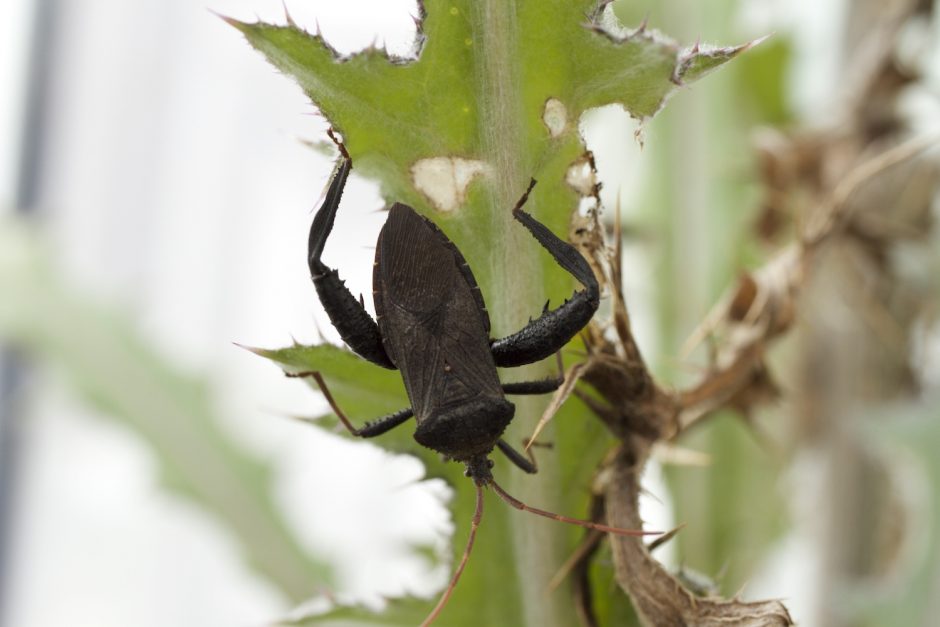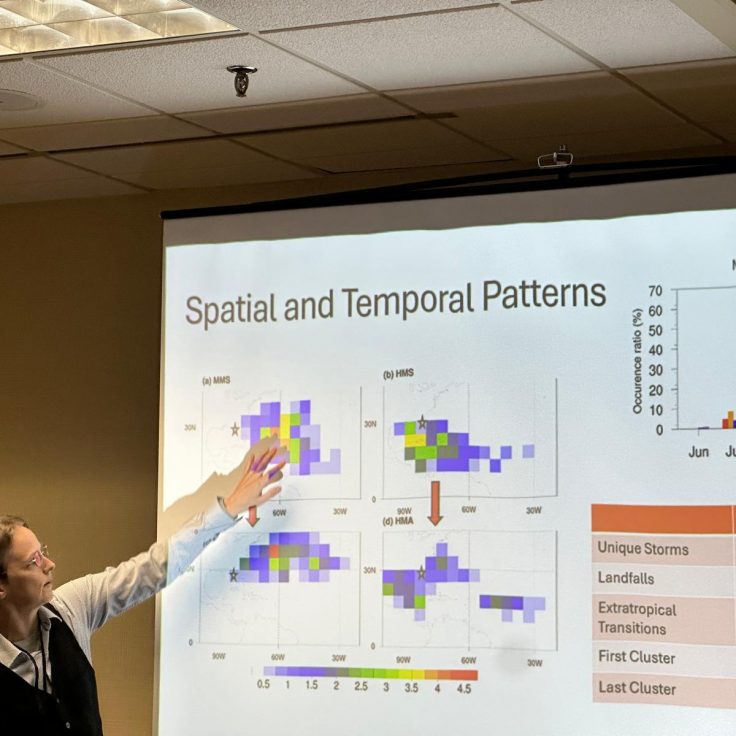
Drastic Measures
How Leaf-Footed Bugs Evolved to Lose Limbs for Survival
When we think of animals sacrificing their limbs, the common image is of a lizard leaving its tail in a predator’s clutches while scrambling to safety. But there’s much more to this phenomenon — known as autotomy — throughout the animal kingdom, and it remains an open question how certain animals acquired this fascinating trait in the first place.
New findings led by College of Liberal Arts and Science researchers shed light on how leaf-footed bugs and other similar insects came to develop such extreme behavior. While lizards regrow the tails they’ve shed, these tropical and subtropical bugs have no such luxury when they detach legs — the limb is gone for good. But spending their lives hobbled is a price they’re willing to pay to escape deadly situations.
“Autotomy is something you’ll read about in intro biology as an extreme adaptation and iconic anti-predatory defense. But fundamental questions remain unanswered,” said ZACHARY EMBERTS, who conducted the research as part of his PhD dissertation at UF. Emberts, now a postdoctoral researcher at University of Arizona, worked with adviser and UF biology professor COLETTE ST. MARY (opens in new tab), along with collaborators from UF and institutions in Australia, Panama and Singapore.
The paper, published in Evolution (opens in new tab), found evidence that these insects’ ancestors first autotomized slowly, indicating that the trait did not originally appear in order to evade predators but rather was “co-opted” for this purpose over the course of natural selection.
While many of the insect species the researchers studied dropped limbs quickly, sometimes nearly instantaneously, others took more than twenty minutes to do so. These species would be doomed if they relied on autotomy to save themselves from becoming a hungry spider’s meal.
These findings suggest an “intermediate step” during evolution when the insects’ common ancestor could only drop limbs in less time-sensitive — but still treacherous — scenarios. We can still see this behavior in these species today: Some slowly-autotomizing bugs will shed a leg to free themselves from discarded skin when molting, while others, after suffering an injury to a leg, opt to drop the cumbersome limb in order to become nimbler.
“This paper highlights that, while people interested in autotomy have long focused on its benefits in avoiding predation, other benefits, perhaps to do with successful molting or responses to injury, have played a more important role in its early evolution in this insect group,” St. Mary said. “Hopefully this study will promote similar studies in other groups so we can better understand this fascinating trait.”

The researchers expected that insects with enlarged hind legs would be less willing to shed them, as these meaty haunches are desirable traits in the eyes of potential mates. But to their surprise, the team discovered that bugs with enlarged hind legs actually autotomized more quickly. This may be because these hefty appendages are easy targets for predators, making it more evolutionarily beneficial to drop them and escape than to keep them in hopes of acquiring a mate. After all, a dead insect has little chance of attracting a partner.
The study also found that species autotomized more quickly when they live closer to the equator, where they’re besieged by an abundance and diversity of different predators. Larger leaf-footed bugs, meanwhile, autotomize more slowly. This may be because bigger insects are more commonly feasted upon by bigger predators — detaching a limb, no matter how quickly, is little recourse against a swooping bird, so rapid autotomy was less important for these species.
Looking ahead, Emberts said researchers can build upon this work by studying how autotomy have evolved in other animals such as walking sticks, salamanders, decapod crustaceans and spiders.
Emberts and St. Mary’s collaborators were Christine Miller (opens in new tab), UF Entomology and Nematology Associate Professor; Rebecca Kimball (opens in new tab), UF Biology Professor; Cody Coyotee Howard, PhD candidate at the Florida Museum of Natural History; Michael Forthman, postdoctoral researcher in the UF department of Entomology and Nematology; and researchers from Curtin University in Australia, the Smithsonian Tropical Research Lab in Panama, the Lee Kong Chian Natural History Museum in Singapore, and the National University of Singapore.


